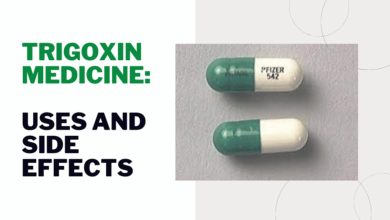In the healthcare industry, innovations can be life-altering for millions of people. For instance, successful telehealth implementation and robotic surgery advancements have changed medical operations forever. There has been a 50% increase in telehealth usage since 2020, and the surgical robot market is expected to reach USD 24 billion by 2025.
The industry celebrates market leaders who introduced such successful medical innovations to enhance the quality of care. However, there are many who fail and face the wrath of patients or doctors. Every year, 95% of all new products, including healthcare innovations, fail.
In the medical industry, these failure rates are due to implementation complexes and the need for profit. Sometimes, companies push products to the market before they are ready. That’s when medical and health innovations fail.
In this blog, we will discuss three such failures that the healthcare industry can learn from.
#1. Hip Replacement Devices (Exactech)
Metal-on-polyethylene knee, hip, and ankle replacement implants became a troublesome medical innovation. Exactech was one such company that manufactured orthopedic metal-on-polyethylene implants, claiming to have a lifespan of 25+ years.
Patients with joint problems received a better range of motion with these polyethylene implants. The devices were robust and could preserve the natural bone structure, improving the patient’s quality of life.
However, the company overlooked a packaging flaw that oxidized the implant’s inserts, leading to premature failure. This negligence forced patients to get revision surgery for bone loss and degradation. According to TorHoerman Law, 200,000 Exactech implants have been recalled due to quality issues.
As a result, the patients filed product liability and personal injury lawsuits. Currently, there are 567 lawsuits filed against Exactech. Upon receiving so many plaintiffs, the court turned it into a unique legal procedure called a multidistrict lawsuit (MDL).
Doing so consolidated all the lawsuits into one Exactech MDL to speed up the litigation process. The legal community suspects that this MDL can bring individual settlement amounts between USD 50,000 and USD 300,000.
#2. Automated Blood Testing (Theranos)
In recent years, automated blood testing has become a new ‘hot topic’ in the medical industry. According to a report, the American healthcare system performs almost 2 billion blood tests every 24 months. Needless to say, these blood test results influence 80% to 90% of the patient’s diagnosis and management.
That’s why the results need to be perfect. Theranos was one such company that wanted to revolutionize blood diagnostic technology. However, this soon became a dangerous innovation failure, leading to the wrong diagnosis and treatment challenges.
The company allegedly botched and manipulated lab results to gain lucrative investments. Their products didn’t seem to work either. As of March 2023, the founder, Elizabeth Holmes, owes USD 25 million for medical malpractice and negligence.
Theranos had a valuation of USD 10 billion but lost it all in a fraud scandal. Named the ‘fallen unicorn,’ this is an example of what not to do with medical technology. Other companies learned from Theranos’s mistakes and are trying to make blood testing easier, faster, and automated.
#3. Sleep Monitoring Technology (Zeo)
According to Research Gate, the healthcare industry has put considerable effort into creating sleep monitoring systems in recent years. Innovators wanted to develop wireless monitoring networks that offered autonomy, non-intrusiveness, and portability. Hence, manufacturers used leading sensor technologies and communication systems to innovate such a product.
The idea promised a discreet, long-term, low-cost, contactless, and accessible structure. Hence, a company called Zeo created a sleep-monitoring alarm clock based on this innovative idea. The device could potentially learn from the owner’s sleep patterns and form a diagnosis.
Initially, Zeo’s product gained popularity due to its excellent marketing efforts. The company used TV advertising as a ‘mousetrap’ to hype the device and attract buyers.
However, the company made a mistake by rushing half-ready products into the market to gain profit. Zeo didn’t take the time to understand the user’s demands and needs, leading to their ultimate failure.
The Way Forward
These medical innovation failures should teach the healthcare industry a few things. Companies looking to release innovative devices in the healthcare industry should learn to avoid mistakes made by their predecessors.
For instance, the Exactech incident should prove that safety assessments and regular quality checks are necessary for medical technology. From Zeo’s failure, the industry can understand that products should be user-ready before investing in glossy marketing efforts. Similarly, Theranos’s misleading operations prove the need for accountability and transparency in the medical industry.
Along with these lessons, companies should understand that consumer needs are more important than making money off of medical innovations. They should also keep a close eye on the competitor’s success, gauge market demands, and learn from customer reviews. Only then can technological advances survive in the medical industry.





